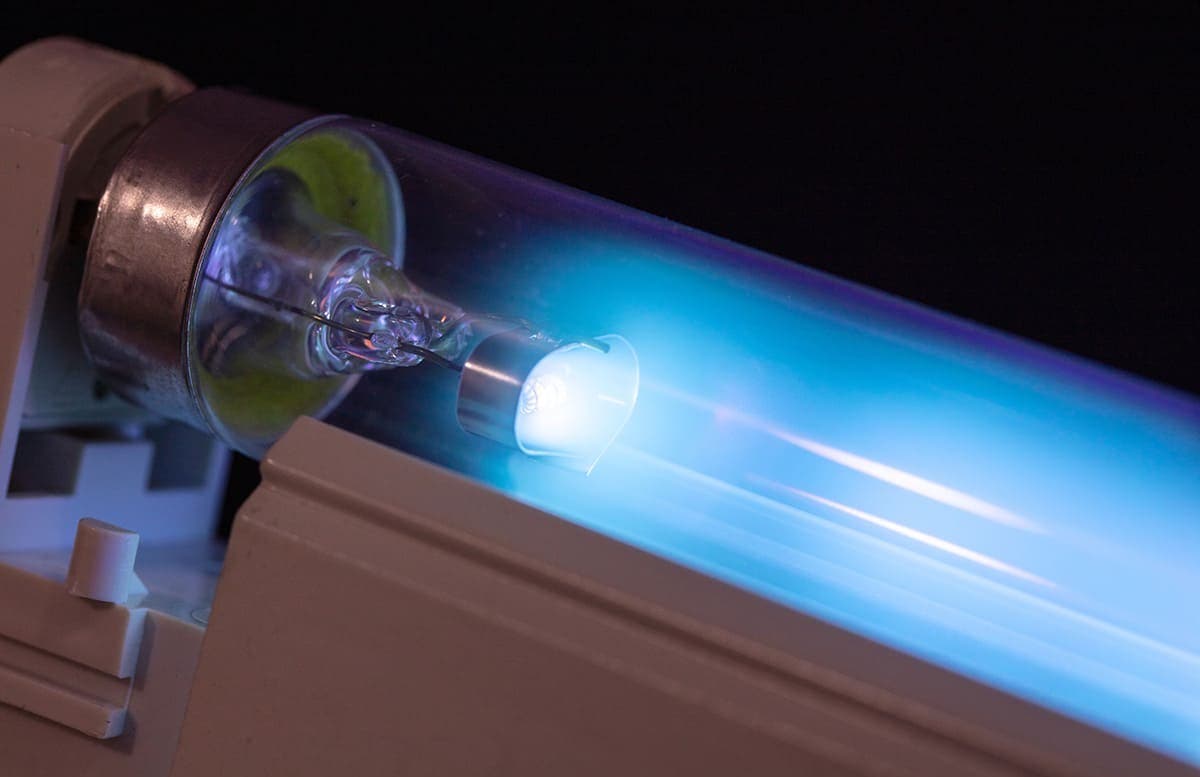Powerful LED light can kill bacteria and viruses without harming humans
A highly efficient LED that is deadly to microbes and viruses but safe for people has been engineered by three RIKEN physicists.

[Nov. 19, 2022: Masafumi Jo, Riken]
Most LEDs emit visible light, but RIKEN physicists have created an LED that emits in a narrow region in the far ultraviolet that is safe for humans but deadly for viruses and bacteria. (CREDIT: Creative Commons)
A highly efficient LED that is deadly to microbes and viruses but safe for people has been engineered by three RIKEN physicists. It could one day help countries emerge from the shadows of pandemics by killing pathogens in rooms full of people.
Ultraviolet germicidal lamps are extremely effective at exterminating bacteria and viruses, and they are routinely used in hospitals to sterilize surfaces and medical instruments.
Such lamps can be made with LEDs, making them energy efficient. But these LEDs use ultraviolet light in a range that damages DNA and thus cannot be used around people. The hunt is on to develop efficient LEDs that shine light within a narrow band of far-ultraviolet light that appears to be both good at disinfecting and safe for people.
Germicidal LED lamps that operate in the absence of humans are often made from aluminum, gallium and nitrogen. By increasing the amount of aluminum they contain, these LEDs can be modified to work in a wavelength region that is safe for humans. But traditionally this has dramatically reduced their power.
Related Stories:
To get around this, Masafumi Jo, Yuri Itokazu and Hideki Hirayama, all at the RIKEN Quantum Optodevice Laboratory, created an LED with a more complex design. They sandwiched together multiple layers, each containing slightly different proportions of aluminum, while in some layers they also added tiny amounts of silicon or magnesium.
This effectively created an obstacle course for electrons, hampering their movement across the material and trapping them for longer in certain areas. This, in turn, increased the amount of light emitted by the device and reduced the amount it absorbed.
To help pin down the best design, the team used computer simulations to model all possible effects. “We then grew samples to see if it was effective or not,” Jo says. The biggest experimental challenge was precisely controlling the thickness of each layer.
They created an LED operating in the far ultraviolet, with an output power almost ten times higher than their previous best.
The COVID-19 pandemic brought a new consciousness of the importance of being able to destroy viruses and microbes on surfaces. “We trust that our findings and technologies will be very useful for safeguarding society against this and future pandemics,” says Jo.
Most LEDs emit visible light, but RIKEN physicists have created an LED that emits in a narrow region in the far ultraviolet that is safe for humans but deadly for viruses and bacteria. (CREDIT: GIPHOTOSTOCK/SCIENCE PHOTO LIBRARY)
Jo adds that the trio will strive to improve their LED’s performance even further. “There’s still much room for improvement in the output power and the power efficiency,” he notes.
Their study appears in Applied Physics Letters.
For more science and technology stories check out our New Discoveries section at The Brighter Side of News.
Note: Materials provided above by Riken. Content may be edited for style and length.
Like these kind of feel good stories? Get the Brighter Side of News' newsletter.
Joseph Shavit
Head Science News Writer | Communicating Innovation & Discovery
Based in Los Angeles, Joseph Shavit is an accomplished science journalist, head science news writer and co-founder at The Brighter Side of News, where he translates cutting-edge discoveries into compelling stories for a broad audience. With a strong background spanning science, business, product management, media leadership, and entrepreneurship, Joseph brings a unique perspective to science communication. His expertise allows him to uncover the intersection of technological advancements and market potential, shedding light on how groundbreaking research evolves into transformative products and industries.



